Food prices soar in Argentina as peso devalues
The cost in pesos of imported produce such as bananas recently spiked because importers typically pay in dollars.
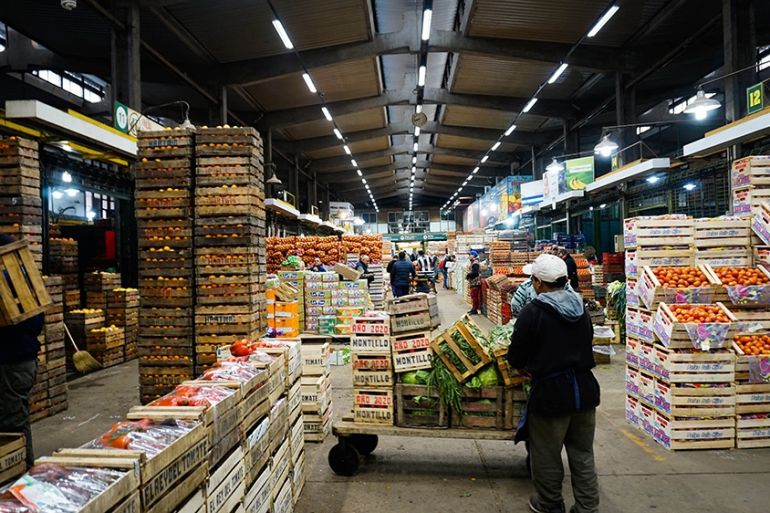
Buenos Aires, Argentina – Silvia Echeverria gingerly balanced a box containing two sheets of stuffed sorrentinos in the crook of her left arm, holding the pasta like a tray of jewels.
At 51.5 pesos (less than $1) per sheet, her purchase of the South American nation’s version of round ravioli was a steal. Go to a pasta store, and one sheet will cost you nearly twice as much in a country where the price of food has climbed rapidly as recession deepens.
Keep reading
list of 4 itemsBoeing hit with 32 whistleblower claims, as dead worker’s case reviewed
US imposes new sanctions on Iran after attack on Israel
A flash flood and a quiet sale highlight India’s Sikkim’s hydro problems
In her right hand, Echeverria carried the real reason for her visit to the Coto grocery store in Once, her Buenos Aires neighbourhood: a loaf of bread that was on sale.
For now, at least, Echeverria, 75 and a retired doctor, says she can still find deals in the food aisles. Even so, she has to hunt them down.
“The day before yesterday, I went to go buy the medicine I will need next month, [putting it] on my credit card,” she said, noting she was doing this in anticipation of prices going up. “You have to think everything through. There’s a whole architecture of purchases to be able to maintain the lifestyle that you’re used to.”
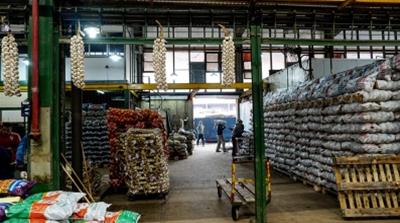
In the grip of an economic crisis that has dragged on for the better part of a year, Argentines were dealt another blow last Monday when their currency plunged yet again, hitting an all-time low of 65 pesos to the United States dollar. This followed the surprisingly dramatic loss of the pro-market president in presidential primaries on Sunday. And the currency has fluctuated ever since, ending the week at 55 pesos to the dollar.
Argentina is notorious for its volatile inflation and unpredictable currency. But in 2018, inflation hit its highest level since 1991, spiking to 47.6 percent. It is running at over 50 percent this year, alongside growing poverty, unemployment and resentment on the streets that resulted in a decisive primary win for the opposition candidates, Alberto Fernandez and his populist running mate, former president Cristina Fernandez de Kirchner.
Desperate retailers try to incentivise purchases with sales and interest-free payment plans, but consumption, predictably, is down. The National Statistics and Censuses Institute (IDEC) reports that sales fell 13.5 percent in grocery stores – and more than 18 percent in shopping malls – in May alone.
Fewer trips to the grocery store
It’s food prices that are particularly alarming. Ask Argentines to talk about the economic crisis, and they will lament their dwindling hauls from grocery stores. In June, INDEC reported that the cost of the “basic food basket” – a figure used by the government to measure poverty – had increased 58 percent over the last year for a family of four. In the aftermath of Monday’s sharp devaluation, the cost in pesos of imported produce such as bananas and avocados spiked because importers pay for them in dollars. And butchers interviewed by Al Jazeera said prices for beef (which increased 67 percent from May 2018 to May 2019) went up seven to 10 percent, with another hike anticipated in the near future. Media have reported that the prices of flour, oil, pasta and rice – among other goods – have risen or are likely to do so in the future. The increased price of material used to package food is also driving costs up.
It remains to be seen how much of this will be offset by the government’s decision last week to suspend its goods and services tax (known as the impuesto al valor agregado or IVA) on a list of products it considers essential – including bread, milk, oil, pasta, sugar and rice. The IVA is typically 21 percent, and factored into an item’s ticket price. In the case of some essential goods such as flour, bread, fruit and beef, it can be as low as 10.5 percent. Last weekend, Walmart announced that shoppers can now find more than 1,500 products IVA free in its stores in Argentina.
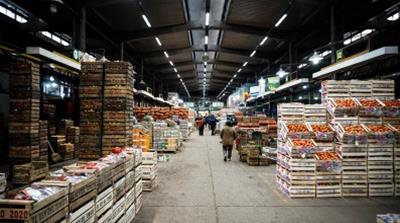
Embattled President Mauricio Macri called the tax moratorium “exceptional”, and a first in the country’s history. It extends until the end of the year. “I am confident that this will be a relief to the pocketbooks of Argentines,” Macri said in a video message on Thursday. “And we’re going to be strictly watching that this is carried out across the country.”
The president, who is trying to salvage his chances of re-election in October, also announced a 90-day freeze on petrol prices, which could help mitigate transportation costs.
Leo Bilanski, president of the National Association of Business Owners for the Development of Argentina, doubted the government’s measures would make much of a long-term difference. “It might cut the price these days, but the prices are going to keep going up,” said Bilanski, whose organisation represents bakeries, among other businesses.
Prices are up, and sales are down
Bilanski underscored the gravity of the situation. “On Friday, the bag of flour cost 900 pesos [$16.41]. And on Monday, it was between 1,250 and 1,350 pesos [$22.79 and $24.62],” he said. “It went up 40 percent.”
He said that bakeries have been adjusting and trying to absorb the loss, but that eventually, the prices will go up. He noted that the cost of a kilogramme of bread is expected to go from 80 pesos ($1.46) to 105 to 120 pesos ($1.91 to $2.19) this week. “It’s not in the DNA of small business owners to want to harm their clients,” said Bilanski. “It’s just that they have no choice because of the big companies that set the prices in Argentina.”
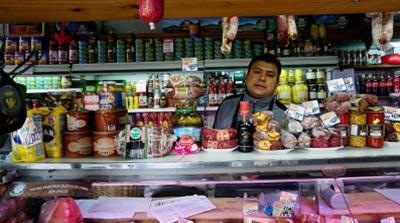
In the Mercado Central, the wholesale food market near Ezeiza International Airport, Jorge Ruben Rodriguez stood at a counter surrounded by red peppers and purple eggplants. His merchandise isn’t beholden to the whim of the financial market: prices rise and fall with the seasons or climate irregularities. But the economic storm in his country is having an impact – and affecting his bottom line because it is driving down the prices of some goods, especially those that perish quickly.
“On Monday and Wednesday, peppers cost 1,500 pesos [$27.35] a crate. [On Friday] they cost 800 to 1,000 [$14.59 to $18.24],” said Rodriguez, who started in the business alongside his uncle when he was 11 years old, some five decades ago. “Sales are down, and our products – you either sell them, or you throw them out because they go rotten. People don’t have money.”
A few stalls down, Bernardo Roy just had to “decommission” 29 crates of pears that were past their “best before” date. “You used to be able to sell your produce in two or three days,” said Roy, who has been in the Mercado Central since it opened, in 1984. Now, notes Roy, this can take more than a week. “It’s a shame,” he said, with misty eyes. “That we go to sleep dressed, and we wake up naked.”
Li Feng, who has owned a grocery store in the Buenos Aires barrio of Monte Castro for 30 years, said that if things don’t improve soon, she will have to close her shop. She shook her electricity bill in the air. It charges 12,000 pesos ($218.83) for her locale. So far, she has kept her prices even because she says if she changes them, she will lose her clients.
In the nearby neighbourhood of Floresta, the cheese and meat shop La Queseria is also holding the line. It won’t replenish its stock until prices stabilise, said salesman Luis Coronel, who reached over a bank of salamis to show a list of products that have gone up in price from vendors, spiking from seven to 20 percent.
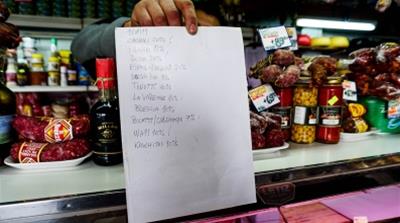
“If the government doesn’t give you a clear signal, what are you supposed to do?” asked Coronel. “The media, everyone talks about the dollar going up. But actually, what is happening is that our currency is the one that is losing value.”
Jessica Soco sees it, too. She crossed Avenida Alvarez Jonte, moving from one grocer to another in search of milk, yogurt and cookies that she could afford. “So far, we’re able to manage it, but we’re starting to look for better prices because you just can’t get to the end of the month,” said Soco, her toddler daughter playing with groceries just bought from a store. “I don’t use credit cards anymore, because I don’t want to be stuck with higher interest [payments].”
Estella Zijler, who has a vegetable shop in the neighbourhood of Villa Crespo, says her clients are not changing what they eat, but they are buying less. Instead of a kilogramme of produce, it’s one potato – just what is necessary for that day.
“Every time that I see that the dollar has gone up and I see that I have to tighten things even more, it causes me a lot of anguish,” said Echeverria, the retired doctor who lives in Once. “I don’t go to the theatre anymore. I don’t go to the movies anymore. I don’t know how much longer I’m going to have cable. Luckily, I know how to use the computer, so I can entertain myself with things like Facebook. But otherwise, what would I do?”